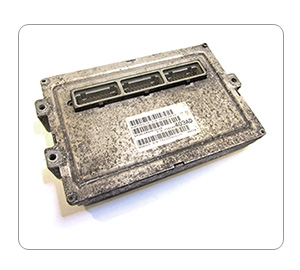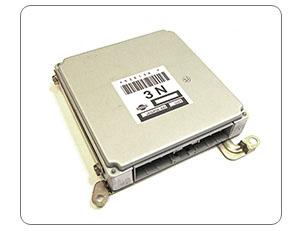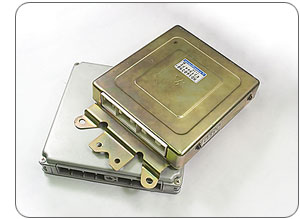 |
 |
 |
 |
 |
 |
 |
 |
 |
|
| |
phone: |
| |
(905) 673-0090 |
| |
|
| |
fax: |
| |
(905) 673-6912 |
| |
|
| |
2311 Anson Dr.,
Unit B
Mississauga,
Ontario
L5S 1G1,
Canada |
|
|
 |
Audi
BMW
Chrysler
Daewoo
Ford
Ferrari
GM
Honda
Hyundai
Infinity
Isuzu
Jaguar
Jeep
Landrover
Lexus
|
Lamborgini
Mazda
Mercedes
Mitsubishi
Nissan
Porsche
Rover
Saab
Subaru
Suzuki
Toyota
VW
Volvo
more... |
|
 |
|
|
|
The Powertrain Control Module (PCM) monitors
and controls the speed control,
charging, A/C, and automatic transmission.
The Engine Control Module .(ECM) monitors and controls the Fuel Engine System.
The Transmission Control Module (TCM) in your car oversee the operation of the transmission
|
Most popular units are: 1981-1992 Mitsubishi, 1996-2003 Chrysler, 2002-2004 Nissan.
|
| Electronic transmissions are getting smarter all the time. Most of the current generation units have fully adaptive control systems that "learn" the best shift points based on real-time sensor inputs and feedback. The transmission computer adapts the shift strategy to compensate for changes in engine performance and wear in the transmission friction elements in the clutches. By making subtle changes to the shift points and engagement, the computer tries to maintain consistent shift quality. |
The TCM monitors what’s happening inside the transmission with various speed and gear range sensors that tell it if the gears are shifting correctly and at what speeds. But to pick the shift points, it needs certain inputs from the ECM and PCM. The TCM needs to know how fast the vehicle is traveling. This information is provided by the vehicle speed sensor. It also needs to know engine rpm and load.
On some applications, the rpm signal is hard-wired directly to the transmission computer as well as the PCM. There’s a dedicated circuit between the crankshaft position sensor and TCM to supply the rpm signal. On other applications, the rpm signal goes only to the PCM and the PCM forwards it to the TCM via a data bus circuit. |
 |
| Depending on what type of fuel injection system is used (speed density or airflow), engine load inputs may come from the throttle position sensor (TPS), manifold absolute pressure sensor (MAP) and/or a vane airflow sensor (VAF) or mass airflow sensor (MAF). As with the rpm signal, the information may be shared directly with the TCM or it may go through the PCM and forwarded to the TCM over the data bus. |

|
TCM FAIL SYMPTOMS
- Car may not shift smoothly. Engine rpm’s flare up when the engine is started
- Engine may shift at the wrong rpm. The transmission on the car occasionally shifts rather harshly
- Engine may even go into a "limp-in" mode and remain frozen in second or third gear.
- Powertrain related sound(s) which may be described as front axle whine or as 2,200 to 2,400 engine rpm moan
|
PCM FAIL SYMPTOMS
- Engine shut down before turning off ignition switch. Engine would not start again.
- Failure to start or vehicle is stalling.
- Engine stalling/poor performance, engine temp rising when car was not moving, and transmission shuddering.
- No start at times; Intermittent stalling while driving during warm-up or when hot, usually restarts; Power "hitch" at cruise or under load
- Erratic shifting and power loss due to the lock-up torque converter engaging in third gear
|
 |
- Car will run when stationery but after one or two miles the engine cuts out.
- The vehicle engine is operating at higher than normal engine temperatures
- The driver may experience a drone like noise while the vehicle is idling at a stop. The drone like noise may be most noticeable when the engine is fully warmed and idling around 600 rpm.
|

|
ECM FAIL SYMPTOMS
- The ECM also performs the diagnostic function of the fuel injection system. When the ECM senses an operational problem, it will illuminate the ``Check Engine'' lamp to identify the problem area
- The customer may experience an incident of engine misfire during certain vehicle operating conditions
- While operating in speed control, a loss of vehicle speed may be experienced prior to transmission down shift
|
|
|

